124 have author last names that start with O have author last names that start with O
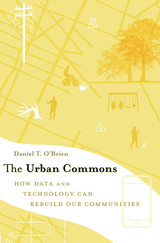
The future of smart cities has arrived, courtesy of citizens and their phones. To prove it, Daniel T. O’Brien explains the transformative insights gleaned from years researching Boston’s 311 reporting system, a sophisticated city management tool that has revolutionized how ordinary Bostonians use and maintain public spaces. Through its phone service, mobile app, website, and Twitter account, 311 catalogues complaints about potholes, broken street lights, graffiti, litter, vandalism, and other issues that are no one citizen’s responsibility but affect everyone’s quality of life. The Urban Commons offers a pioneering model of what modern digital data and technology can do for cities like Boston that seek both prosperous growth and sustainability.
Analyzing a rich trove of data, O’Brien discovers why certain neighborhoods embrace the idea of custodianship and willingly invest their time to monitor the city’s common environments and infrastructure. On the government’s side of the equation, he identifies best practices for implementing civic technologies that engage citizens, for deploying public services in collaborative ways, and for utilizing the data generated by these efforts.
Boston’s 311 system has narrowed the gap between residents and their communities, and between constituents and local leaders. The result, O’Brien shows, has been the creation of more effective policy and practices that reinvigorate the way citizens and city governments approach their mutual interests. By unpacking when, why, and how the 311 system has worked for Boston, The Urban Commons reveals the power and potential of this innovative system, and the lessons learned that other cities can adapt.
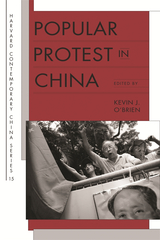
Do our ideas about social movements travel successfully beyond the democratic West? Unrest in China, from the dramatic events of 1989 to more recent stirrings, offers a rare opportunity to explore this question and to consider how popular contention unfolds in places where speech and assembly are tightly controlled. The contributors to this volume, all prominent scholars of Chinese politics and society, argue that ideas inspired by social movements elsewhere can help explain popular protest in China.
Drawing on fieldwork in China, the authors consider topics as varied as student movements, protests by angry workers and taxi drivers, recruitment to Protestant house churches, cyberprotests, and anti-dam campaigns. Their work relies on familiar concepts—such as political opportunity, framing, and mobilizing structures—while interrogating the usefulness of these concepts in a country with a vastly different history of class and state formation than the capitalist West. The volume also speaks to “silences” in the study of contentious politics (for example, protest leadership, the role of grievances, and unconventional forms of organization), and shows that well-known concepts must at times be modified to square with the reality of an authoritarian, non-western state.

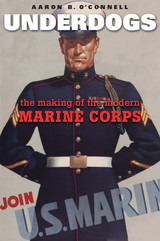
The Marine Corps has always considered itself a breed apart. Since 1775, America’s smallest armed service has been suspicious of outsiders and deeply loyal to its traditions. Marines believe in nothing more strongly than the Corps’ uniqueness and superiority, and this undying faith in its own exceptionalism is what has made the Marines one of the sharpest, swiftest tools of American military power. Along with unapologetic self-promotion, a strong sense of identity has enabled the Corps to exert a powerful influence on American politics and culture.
Aaron O’Connell focuses on the period from World War II to Vietnam, when the Marine Corps transformed itself from America’s least respected to its most elite armed force. He describes how the distinctive Marine culture played a role in this ascendancy. Venerating sacrifice and suffering, privileging the collective over the individual, Corps culture was saturated with romantic and religious overtones that had enormous marketing potential in a postwar America energized by new global responsibilities. Capitalizing on this, the Marines curried the favor of the nation’s best reporters, befriended publishers, courted Hollywood and Congress, and built a public relations infrastructure that would eventually brand it as the most prestigious military service in America.
But the Corps’ triumphs did not come without costs, and O’Connell writes of those, too, including a culture of violence that sometimes spread beyond the battlefield. And as he considers how the Corps’ interventions in American politics have ushered in a more militarized approach to national security, O’Connell questions its sustainability.

Although it is widely acknowledged that St. Augustine was a consummate artist as well as a great philosopher, and that he was deeply concerned with art, beauty and human values, relatively little attention has been paid to his theory of aesthetics. Now a distinguished Augustine scholar turns to this important subject and offers a book that is at once engaging, comprehensive and complete.
Father O'Connell begins with a paradox: how could so dedicated a literary artist propose, at times, a theory of art that amounts to the banishment of art? In attempting to answer this and other important questions, the author's purpose is not merely to recount but to retrieve St. Augustine's views. He suggests that Augustine's need to understand, and by understanding to exorcise, art's spell on him provides a key to all the philosophical and theological questions that absorbed him. Seen in this light, St. Augustine's aesthetic may lie at the very heart of his philosophy.


From its origins as a Puritan settlement on the Shawmut Peninsula to the multicultural capital of the knowledge industry that it is today, the city of Boston has played a significant role in our nation's history. In this book, the preeminent historian of Boston, Thomas H. O'Connor, takes readers on a delightful tour of the city, past and present. Drawing on lifelong acquaintance as a native son and scholar, O'Connor has assembled a personal, informal, and eclectic series of essays about Boston's people, places, and events.
Along the way you will meet figures of national significance and local heroes (or rogues), from John Adams and Phillis Wheatley to "Honey Fitz" and the Brink's gang; visit spaces sacred and profane, from the African Meeting House and Holy Cross Cathedral to Filene's Basement and the L Street Bathhouse; learn about institutions of civic importance and local color, from the Museum of Fine Arts and Massachusetts General Hospital to private clubs and nightspots; and be enlightened about the lore surrounding such quintessentially Boston topics as baked beans, the Curse of the Bambino, and the Steaming Kettle.
Boston A to Z wears its learning lightly but never fails to inform as it entertains. While celebrating some of Boston's finest achievements, it doesn't shy away from darker episodes. Longtime residents will find enlightenment about familiar and arcane aspects of their city, and visitors or newcomers will enjoy an engaging introduction to the life, culture, and history of Boston.

The history of Boston is inseparable from the life stories of its people--from the Puritans and Native Americans of the seventeenth century to the civic leaders and celebrities of today. In Eminent Bostonians, Thomas H. O'Connor, the preeminent historian of Boston, offers a personal selection of entertaining and enlightening brief lives of notable residents of the city.
Eminent Bostonians includes some 130 figures of local and national significance from the arts, literature, religion, politics, science and medicine, business, education, and sports. Some would be on every list of prominent Bostonians, and some will come as a genuine surprise. As at a large dinner party, part of the fun is seeing who is seated next to whom: the fictional Proper Bostonian George Apley, a creation of John P. Marquand, followed by Anthony Athanas, the Albanian immigrant owner of Anthony's Pier 4 restaurant, followed by Crispus Attucks, a victim of the Boston Massacre in 1770. Or Lucy Stone, a pioneering feminist, next to Gilbert Stuart, the eighteenth-century portraitist, next to John L. Sullivan, the early-twentieth-century champion boxer. Or the Red Sox legend Ted Williams between Phillis Wheatley, an eighteenth-century African-American poet, and the Puritan founder John Winthrop.
And so it goes, from Abigail Adams to Leonard P. Zakim: a gallery of Brahmins and immigrants, workers and scholars, reformers and reactionaries, dreamers and schemers. Eminent Bostonians introduces longtime residents and newcomers alike to their neighbors--those who made Boston what it was and what it is today.
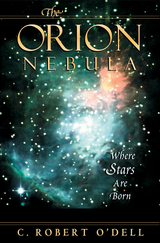
The glowing cloud in Orion's sword, the Orion Nebula is a thing of beauty in the night sky; it is also the closest center of massive star formation--a stellar nursery that reproduces the conditions in which our own Sun formed some 4.5 billion years ago. The study of the Orion Nebula, focused upon by ever more powerful telescopes from Galileo's time to our own, clarifies how stars are formed, and how we have come to understand the process. C. Robert O'Dell has spent a lifetime studying Orion, and in this book he explains what the Nebula is, how it shines, its role in giving birth to stars, and the insights it affords into how common (or rare) planet formation might be.
An account of astronomy's extended engagement with one remarkable celestial object, this book also tells the story of astronomy over the last four centuries. To help readers appreciate the Nebula and its secrets, O'Dell unfolds his tale chronologically, as astrophysical knowledge developed, and our knowledge of the Nebula and the night sky improved.
Because he served as chief scientist for the Hubble Space Telescope, O'Dell conveys a sense of continuity with his professional ancestors as he describes the construction of the world's most powerful observatory. The result is a rare insider's view of this observatory--and, from that unique perspective, an intimate observer's understanding of one of the sky's most instructive and magnificent objects.

The written word has been a central bearer of culture since antiquity. But its position is now being challenged by the powerful media of electronic communication. In this penetrating and witty book James O'Donnell takes a reading on the promise and the threat of electronic technology for our literate future.
In Avatars of the Word O'Donnell reinterprets today's communication revolution through a series of refracted comparisons with earlier revolutionary periods: the transition from oral to written culture, from the papyrus scroll to the codex, from copied manuscript to print. His engaging portrayals of these analogous epochal moments suggest that our steps into cyberspace are not as radical as we might think. Observing how technologies of the word have affected the shaping of culture in the past, and how technological transformation has been managed, we regain models that can help us navigate the electronic transformation now underway. Concluding with a focus on the need to rethink the modern university, O'Donnell specifically addresses learning and teaching in the humanities, proposing ways to seek the greatest benefit from electronic technologies while steering clear of their potential pitfalls.
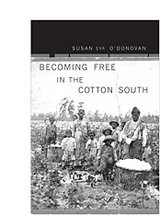
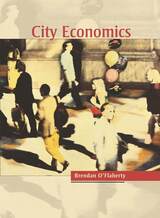
This introductory but innovative textbook on the economics of cities is aimed at students of urban and regional policy as well as of undergraduate economics. It deals with standard topics, including automobiles, mass transit, pollution, housing, and education but it also discusses non-standard topics such as segregation, water supply, sewers, garbage, fire prevention, housing codes, homelessness, crime, illicit drugs, and economic development.
Its methods of analysis are primarily verbal, geometric, and arithmetic. The author achieves coherence by showing how the analysis of various topics reinforces one another. Thus, buses can tell us something about schools and optimal tolls about land prices. Brendan O'Flaherty looks at almost everything through the lens of Pareto optimality and potential Pareto optimality--how policies affect people and their well-being, not abstract entities such as cities or the economy or growth or the environment. Such traditionalism leads to radical questions, however: Should cities have police and fire departments? Should tax preferences for home ownership be repealed? Should public schools charge for their services? O'Flaherty also gives serious consideration to such heterodox policies as pay-at-the-pump auto insurance, curb rights for buses, land taxes, marginal cost water pricing, and sidewalk zoning.
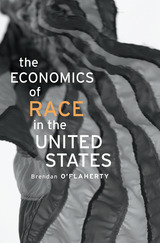
Brendan O’Flaherty brings the tools of economic analysis—incentives, equilibrium, optimization, and more—to bear on contentious issues of race in the United States. In areas ranging from quality of health care and education, to employment opportunities and housing, to levels of wealth and crime, he shows how racial differences among blacks, whites, Hispanics, and Asian Americans remain a powerful determinant in the lives of twenty-first-century Americans. More capacious than standard texts, The Economics of Race in the United States discusses important aspects of history and culture and explores race as a social and biological construct to make a compelling argument for why race must play a major role in economic and public policy. People are not color-blind, and so policies cannot be color-blind either.
Because his book addresses many topics, not just a single area such as labor or housing, surprising threads of connection emerge in the course of O’Flaherty’s analysis. For example, eliminating discrimination in the workplace will not equalize earnings as long as educational achievement varies by race—and educational achievement will vary by race as long as housing and marriage markets vary by race. No single engine of racial equality in one area of social and economic life is strong enough to pull the entire train by itself. Progress in one place is often constrained by diminishing marginal returns in another. Good policies can make a difference, and only careful analysis can figure out which policies those are.

Mentally ill people turned out of institutions, crack-cocaine use on the rise, more poverty, public housing a shambles: as attempts to explain homelessness multiply so do the homeless—and we still don’t know why. The first full-scale economic analysis of homelessness, Making Room provides answers quite unlike those offered so far by sociologists and pundits. It is a story about markets, not about the bad habits or pathology of individuals.
One perplexing fact is that, though homelessness in the past occurred during economic depressions, the current wave started in the 1980s, a time of relative prosperity. As Brendan O’Flaherty points out, this trend has been accompanied by others just as unexpected: rising rents for poor people and continued housing abandonment. These are among the many disconcerting facts that O’Flaherty collected and analyzed in order to account for the new homelessness. Focused on six cities (New York, Newark, Chicago, Toronto, London, and Hamburg), his studies also document the differing rates of homelessness in North America and Europe, and from one city to the next, as well as interesting changes in the composition of homeless populations. For the first time, too, a scholarly observer makes a useful distinction between the homeless people we encounter on the streets every day and those “officially” counted as homeless.
O’Flaherty shows that the conflicting observations begin to make sense when we see the new homelessness as a response to changes in the housing market, linked to a widening gap in the incomes of rich and poor. The resulting shrinkage in the size of the middle class has meant fewer hand-me-downs for the poor and higher rents for the low-quality housing that is available. O’Flaherty’s tightly argued theory, along with the wealth of new data he introduces, will put the study of homelessness on an entirely new plane. No future student or policymaker will be able to ignore the economic factors presented so convincingly in this plainspoken book.
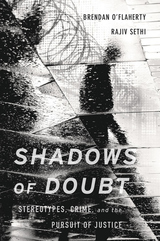
Shadows of Doubt reveals how deeply stereotypes distort our interactions, shape crime, and deform the criminal justice system.
If you’re a robber, how do you choose your victims? As a police officer, how afraid are you of the young man you’re about to arrest? As a judge, do you think the suspect in front of you will show up in court if released from pretrial detention? As a juror, does the defendant seem guilty to you? Your answers may depend on the stereotypes you hold, and the stereotypes you believe others hold. In this provocative, pioneering book, economists Brendan O’Flaherty and Rajiv Sethi explore how stereotypes can shape the ways crimes unfold and how they contaminate the justice system through far more insidious, pervasive, and surprising paths than we have previously imagined.
Crime and punishment occur under extreme uncertainty. Offenders, victims, police officers, judges, and jurors make high-stakes decisions with limited information, under severe time pressure. With compelling stories and extensive data on how people act as they try to commit, prevent, or punish crimes, O’Flaherty and Sethi reveal the extent to which we rely on stereotypes as shortcuts in our decision making. Sometimes it’s simple: Robbers tend to target those they stereotype as being more compliant. Other interactions display a complex and sometimes tragic interplay of assumptions: “If he thinks I’m dangerous, he might shoot. I’ll shoot first.”
Shadows of Doubt shows how deeply stereotypes are implicated in the most controversial criminal justice issues of our time, and how a clearer understanding of their effects can guide us toward a more just society.
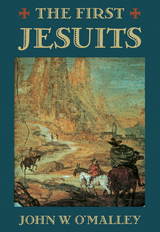
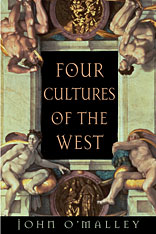
The workings of Western intelligence in our day--whether in politics or the arts, in the humanities or the church--are as troubling as they are mysterious, leading to the questions: Where are we going? What in the world were we thinking? By exploring the history of four "cultures" so deeply embedded in Western history that we rarely see their instrumental role in politics, religion, education, and the arts, this timely book provides a broad framework for addressing these questions in a fresh way.
The cultures considered here originated in the ancient world, took on Christian forms, and manifest themselves today in more secular ways. These are, as John W. O'Malley identifies them: the prophetic culture that proclaims the need for radical change in the structures of society (represented by, for example, Jeremiah, Martin Luther, and Martin Luther King, Jr.); the academic culture that seeks instead to understand those structures (Aristotle, Aquinas, the modern university); the humanistic culture that addresses fundamental human issues and works for the common good of society (Cicero, Erasmus, and Eleanor Roosevelt); and the culture of art and performance that celebrates the mystery of the human condition (Phidias, Michelangelo, Balanchine).
By showing how these cultures, as modes of activity and discourse in which Western intelligence has manifested itself through the centuries and continues to do so, O'Malley produces an essay that especially through the history of Christianity brilliantly illuminates the larger history of the West.
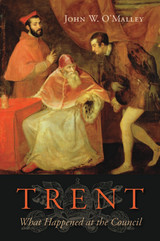
Winner of the John Gilmary Shea Prize
The Council of Trent (1545–1563), the Catholic Church’s attempt to put its house in order in response to the Protestant Reformation, has long been praised and blamed for things it never did. Now, in this first full one-volume history in modern times, John W. O’Malley brings to life the volatile issues that pushed several Holy Roman emperors, kings and queens of France, and five popes—and all of Europe with them—repeatedly to the brink of disaster.
During the council’s eighteen years, war and threat of war among the key players, as well as the Ottoman Turks’ onslaught against Christendom, turned the council into a perilous enterprise. Its leaders declined to make a pronouncement on war against infidels, but Trent’s most glaring and ironic silence was on the authority of the papacy itself. The popes, who reigned as Italian monarchs while serving as pastors, did everything in their power to keep papal reform out of the council’s hands—and their power was considerable. O’Malley shows how the council pursued its contentious parallel agenda of reforming the Church while simultaneously asserting Catholic doctrine.
Like What Happened at Vatican II, O’Malley’s Trent: What Happened at the Council strips mythology from historical truth while providing a clear, concise, and fascinating account of a pivotal episode in Church history. In celebration of the 450th anniversary of the council’s closing, it sets the record straight about the much misunderstood failures and achievements of this critical moment in European history.
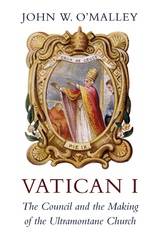
In 1869, some seven hundred Catholic bishops traveled to Rome to participate in the first church-wide council in three hundred years. The French Revolution had shaken the foundations of the church. Pope Pius IX was determined to set things right through a declaration by the council that the pope was infallible.
John W. O’Malley brings to life the bitter, schism-threatening conflicts that erupted at Vatican I. The pope’s zeal in pressing for infallibility raised questions about the legitimacy of the council, at the same time as Italian forces under Garibaldi seized the Papal States and were threatening to take control of Rome itself. Gladstone and Bismarck entered the fray. As its temporal dominion shrank, the Catholic Church became more pope-centered than ever before, with lasting consequences.
“O’Malley’s account of the debate over infallibility is masterful.”
—Commonweal
“[O’Malley] excels in describing the ways in which the council initiated deep changes that still affect the everyday lives of Catholics.”
—First Things
“An eminent scholar of modern Catholicism…O’Malley…invit[es] us to see Catholicism’s recent history as profoundly shaped by and against the imposing legacy of Pius IX.”
—Wall Street Journal
“Gripping…O’Malley continues to engage us with a past that remains vitally present.”
—The Tablet
“The worldwide dean of church historians has completed his trinity of works on church councils…[A] masterclass in church history…telling us as much about the church now as then.”
—America
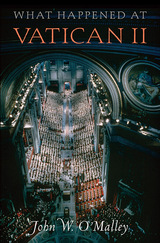
During four years in session, Vatican Council II held television audiences rapt with its elegant, magnificently choreographed public ceremonies, while its debates generated front-page news on a near-weekly basis. By virtually any assessment, it was the most important religious event of the twentieth century, with repercussions that reached far beyond the Catholic church. Remarkably enough, this is the first book, solidly based on official documentation, to give a brief, readable account of the council from the moment Pope John XXIII announced it on January 25, 1959, until its conclusion on December 8, 1965; and to locate the issues that emerge in this narrative in their contexts, large and small, historical and theological, thereby providing keys for grasping what the council hoped to accomplish.
What Happened at Vatican II captures the drama of the council, depicting the colorful characters involved and their clashes with one another. The book also offers a new set of interpretive categories for understanding the council’s dynamics—categories that move beyond the tired “progressive” and “conservative” labels. As we approach the fiftieth anniversary of the calling of the council, this work reveals in a new way the spirit of Vatican II. A reliable, even-handed introduction to the council, the book is a critical resource for understanding the Catholic church today, including the pontificate of Benedict XVI.
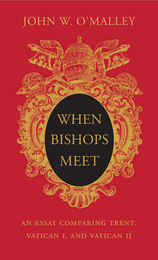
From one of our foremost church historians comes an overarching analysis of the three modern Catholic councils—an assessment of what Catholicism was and has become today.
Catholic councils are meetings of bishops. In this unprecedented comparison of the three most recent meetings, John O’Malley traverses more than 450 years of Catholic history and examines the councils’ most pressing and consistent concerns: questions of purpose, power, and relevance in a changing world. By offering new, sometimes radical, even troubling perspectives on these convocations, When Bishops Meet analyzes the evolution of the church itself.
The Catholic Church today is shaped by the historical arc starting from Trent in the sixteenth century to Vatican II. The roles of popes, the laity, theologians, and others have varied from the bishop-centered Trent, to Vatican I’s declaration of papal infallibility, to a new balance of power in the mid-twentieth century. At Trent, lay people had direct influence on proceedings. By Vatican II, their presence was token. At each gathering, fundamental issues recurred: the relationship between bishops and the papacy, the very purpose of a council, and doctrinal change. Can the teachings of the church, by definition a conservative institution, change over time?
Councils, being ecclesiastical as well as cultural institutions, have always reflected and profoundly influenced their times. Readers familiar with John O’Malley’s earlier work as well as those with no knowledge of councils will find this volume an indispensable guide for essential questions: Who is in charge of the church? What difference did the councils make, and will there be another?
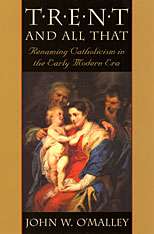
Counter Reformation, Catholic Reformation, the Baroque Age, the Tridentine Age, the Confessional Age: why does Catholicism in the early modern era go by so many names? And what political situations, what religious and cultural prejudices in the nineteenth and twentieth centuries gave rise to this confusion? Taking up these questions, John W. O’Malley works out a remarkable guide to the intellectual and historical developments behind the concepts of Catholic reform, the Counter Reformation, and, in his felicitous term, Early Modern Catholicism. The result is the single best overview of scholarship on Catholicism in early modern Europe, delivered in a pithy, lucid, and entertaining style. Although its subject is fundamental to virtually all other issues relating to sixteenth- and seventeenth-century Europe, there is no other book like this in any language.
More than a historiographical review, Trent and All That makes a compelling case for subsuming the present confusion of terminology under the concept of Early Modern Catholicism. The term indicates clearly what this book so eloquently demonstrates: that Early Modern Catholicism was an aspect of early modern history, which it strongly influenced and by which it was itself in large measure determined. As a reviewer commented, O’Malley’s discussion of terminology ‘opens up a different way of conceiving of the whole history of Catholicism between the Reformation and the French Revolution.”


John Evelyn (1620–1706), an English virtuoso and writer, was a pivotal figure in seventeenth-century intellectual life in England. He left an immensely rich literary heritage, which is of great significance for scholars interested in garden history and the histories of intellectual life and architecture.
Evelyn is perhaps best known for Sylva, a compilation of thoughts on practical estate management, gardening, and philosophy, and the first book published by the Royal Society in London. As one of the group of learned men who founded the Royal Society in 1660 to promote scientific research, discussion, and publications, John Evelyn was at the center of many of the vital intellectual currents of the time. “Elysium Britannicum,” Evelyn’s unpublished manuscript of almost a thousand pages of densely packed drafts, rewrites, and projects, was perhaps something of an enigma to his contemporaries, who nevertheless urged its publication. It remains for scholars today a treasure-trove of fascinating insights on Evelyn and his milieu.
The contributors to this volume approach Evelyn and his work from diverse disciplines, including architectural and intellectual history and the histories of science, agriculture, gardens, and literature. They present a rich picture of the “Elysium Britannicum” as one of the central documents of late European humanism.
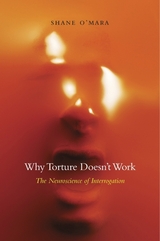
Torture is banned because it is cruel and inhumane. But as Shane O’Mara writes in this account of the human brain under stress, another reason torture should never be condoned is because it does not work the way torturers assume it does.
In countless films and TV shows such as Homeland and 24, torture is portrayed as a harsh necessity. If cruelty can extract secrets that will save lives, so be it. CIA officers and others conducted torture using precisely this justification. But does torture accomplish what its defenders say it does? For ethical reasons, there are no scientific studies of torture. But neuroscientists know a lot about how the brain reacts to fear, extreme temperatures, starvation, thirst, sleep deprivation, and immersion in freezing water, all tools of the torturer’s trade. These stressors create problems for memory, mood, and thinking, and sufferers predictably produce information that is deeply unreliable—and, for intelligence purposes, even counterproductive. As O’Mara guides us through the neuroscience of suffering, he reveals the brain to be much more complex than the brute calculations of torturers have allowed, and he points the way to a humane approach to interrogation, founded in the science of brain and behavior.
Torture may be effective in forcing confessions, as in Stalin’s Russia. But if we want information that we can depend on to save lives, O’Mara writes, our model should be Napoleon: “It has always been recognized that this way of interrogating men, by putting them to torture, produces nothing worthwhile.”

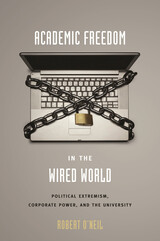
In this passionately argued overview, a longtime activist-scholar takes readers through the changing landscape of academic freedom. From the aftermath of September 11th to the new frontier of blogging, Robert O'Neil examines the tension between institutional and individual interests. Many cases boil down to a hotly contested question: who has the right to decide what is taught in the classroom?
O'Neil shows how courts increasingly restrict professorial judgment, and how the feeble protection of what is posted on the Internet and written in email makes academics more vulnerable than ever. Even more provocatively, O'Neil argues, the newest threats to academic freedom come not from government, but from the private sector. Corporations increasingly sponsor and control university-based research, while self-appointed watchdogs systematically harass individual teachers on websites and blogs. Most troubling, these threats to academic freedom are nearly immune from legal recourse.
Insisting that new concepts of academic freedom, and new strategies for maintaining it are needed, O'Neil urges academics to work together--and across rigid and simplistic divisions between "left" and "right."


In the Spring of 1996, hundreds of international leaders in business, law, government, and education gathered at Harvard University to discuss the growing and future impact of the Internet: one of the most potent technological innovations of this century. This volume, which includes the writings, discussion transcripts, and computer demonstrations from this ground-breaking forum, provides an expert assessment of the impact of this rapidly changing technology on business, government, media, and education for the next decade and into the new millennium.
CEOs and leaders of Microsoft, Apple Computer, Sun Microsystems, and Digital Equipment Corporation join dozens of business leaders in providing both first-hand accounts of current revolutionary changes in the computer industry, as well as their attending influence on the future of the organization, its workers, its customer relations, and the creation and ownership of products themselves. While these pieces serve as an excellent source for understanding today's hottest Internet technologies, they also explore the important issues regarding precisely what is at stake for a society with greater and growing ties to cyberspace.
Topics in this timely collection include privacy and security, property rights, censorship, telecommunications regulation, and the global impact of emerging Internet technologies.

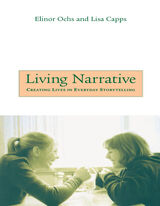
This pathbreaking book looks at everyday storytelling as a twofold phenomenon—a response to our desire for coherence, but also to our need to probe and acknowledge the enigmatic aspects of experience. Letting us listen in on dinner-table conversation, prayer, and gossip, Elinor Ochs and Lisa Capps develop a way of understanding the seemingly contradictory nature of everyday narrative—as a genre that is not necessarily homogeneous and as an activity that is not always consistent but consistently serves our need to create selves and communities.
Focusing on the ways in which narrative is co-constructed, and on the variety of moral stances embodied in conversation, the authors draw out the instructive inconsistencies of these collaborative narratives, whose contents and ordering are subject to dispute, flux, and discovery. In an eloquent last chapter, written as Capps was waging her final battle with cancer, they turn to “unfinished narratives,” those stories that will never have a comprehensible end. With a hybrid perspective—part humanities, part social science—their book captures these complexities and fathoms the intricate and potent narratives that live within and among us.

Drawing upon the unique public and private papers of Ting Jih-ch’ang, Governor of Kiangsu, 1868–1870, this work examines the implementation of post-Taiping T’ung-chih Restoration programs in that province. The restoration of local order and rectification of society, judicial administration, fiscal affairs, and personnel problems are described against a background of continuous struggle for dominance in the countryside between local government on the one hand and the local elite on the other.
Jonathan Ocko demonstrates that the declining quality of local officials resulted in an erosion of public capacity, in particular of the government’s fiscal efficiency, and sharpened the moral dilemmas of office holding. Ocko’s close look at the provincial and local levels of administration and at the day-to-day problems faced by Ting Jih-ch’ang illuminates the frustrations and failures of the reform process.

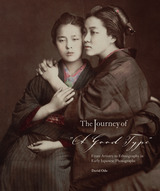
When Japan opened its doors to the West in the 1860s, delicately hand-tinted photographic prints of Japanese people and landscapes were among its earliest and most popular exports. Renowned European photographers Raimund von Stillfried and Felice Beato established studios in Japan in the 1860s; the work was soon taken up by their Japanese protégés and successors Uchida Kuichi, Kusakabe Kimbei, and others. Hundreds of these photographs, collected by travelers from the Boston area, were eventually donated to Harvard’s Peabody Museum of Archaeology and Ethnology, where they were archived for their ethnographic content and as scientific evidence of an "exotic" culture.
In this elegant volume, visual anthropologist David Odo examines the Peabody’s collection of Japanese photographs and the ways in which such objects were produced, acquired, and circulated in the nineteenth century. His innovative study reveals the images' shifting and contingent uses—from tourist souvenir to fine art print to anthropological “type” record—were framed by the desires and cultural preconceptions of makers and consumers alike. Understood as both images and objects, the prints embody complex issues of history, culture, representation, and exchange.



Since 1979 China’s leaders have introduced economic and political reforms that have lessened the state’s hold over the lives of ordinary citizens. By examining the growth in individual rights, the public sphere, democratic processes, and pluralization, the author seeks to answer questions concerning the relevance of liberal democratic ideas for China and the relationship between a democratic political culture and a democratic political system. The author also looks at the contradictory impulses and negative consequences for democracy generated by economic liberalism.
Unresolved issues concerning the relationships among culture, democracy, and socioeconomic development are at the heart of the analysis. Nonideological criteria are used to assess the success of the Chinese approach to building a fair, just, and decent society.
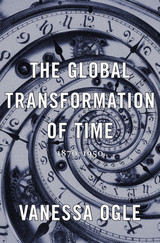
As new networks of railways, steamships, and telegraph communications brought distant places into unprecedented proximity, previously minor discrepancies in local time-telling became a global problem. Vanessa Ogle’s chronicle of the struggle to standardize clock times and calendars from 1870 to 1950 highlights the many hurdles that proponents of uniformity faced in establishing international standards.
Time played a foundational role in nineteenth-century globalization. Growing interconnectedness prompted contemporaries to reflect on the annihilation of space and distance and to develop a global consciousness. Time—historical, evolutionary, religious, social, and legal—provided a basis for comparing the world’s nations and societies, and it established hierarchies that separated “advanced” from “backward” peoples in an age when such distinctions underwrote European imperialism.
Debates and disagreements on the varieties of time drew in a wide array of observers: German government officials, British social reformers, colonial administrators, Indian nationalists, Arab reformers, Muslim scholars, and League of Nations bureaucrats. Such exchanges often heightened national and regional disparities. The standardization of clock times therefore remained incomplete as late as the 1940s, and the sought-after unification of calendars never came to pass. The Global Transformation of Time reveals how globalization was less a relentlessly homogenizing force than a slow and uneven process of adoption and adaptation that often accentuated national differences.

A leading researcher provides a comprehensive review of the basic physiology of the hemostatic system, offering a solid foundation for understanding the pathological events leading up to thrombosis and abnormal bleeding. An introductory chapter, intended for the nonspecialist, outlines the whole hemostatic process and leads the reader carefully into the detailed information that follows. The first section of the book describes basic components of platelet structure and function, the coagulation system, and fibrinolytic enzyme system. The second is a unique discussion of the changes in these components induced by physiological parameters—hormones, sex, environment, nutrition, stress, and activity.
Derek Ogston performs an invaluable service in reviewing pertinent studies that show both positive and negative results and examining conflicting data and conclusions. His work will be a source of insight and data for practicing hematologists as well as researchers in this rapidly growing field.






Not quite a history of geology, Thinking about the Earth is a history of the geological tradition of Western science. Beginning with a discussion of "organic" views of the earth in ancient cultures, David Oldroyd traverses such topics as "mechanical" and "historicist" views of the earth, map-work, chemical analyses of rocks and minerals, geomorphology, experimental petrology, seismology, theories of mountain building, and geochemistry. He brings us back to the idea that the earth may, in a sense, be regarded as a living entity, or at least that life is an essential feature of its behavior.
Oldroyd offers a broad-brush contribution to the history of ideas and theories about the earth, providing a general synthesis of what science-historians have written about the history of the earth sciences. He shows us that ideas about the earth have been changing constantly since the beginnings of geological science in the seventeenth and eighteenth centuries, and indeed that ideas changed much more rapidly after the establishment of this science than in preceding centuries.
Thinking about the Earth does not assume previous knowledge of earth science. What it does require is an openness to the notion that an understanding of what geologists have to tell us today about the earth can be achieved by examining the evolving history of ideas in geology. This book will be of considerable interest to historians of science, historians of ideas, geologists, students of earth science, and general readers as well.
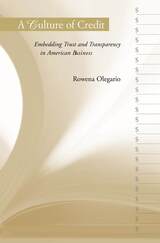
In the growing and dynamic economy of nineteenth-century America, businesses sold vast quantities of goods to one another, mostly on credit. This book explains how business people solved the problem of whom to trust--how they determined who was deserving of credit, and for how much. In the process, a business system based largely on information circulating through personal networks became dependent on more formalized methods and institutions. First to appear in the 1830s was the credit reporting agency, whose pioneers included the abolitionist Lewis Tappan, and businessmen John Bradstreet and Robert G. Dun (whose firms merged in 1933 to form Dun & Bradstreet). Later, groups of business creditors formed interchanges and bureaus to share information on their customers' payment records. In 1896, the National Association of Credit Men was established, and by 1920, credit men had established both a national credit information clearinghouse and a bureau for American exporters.
These developments forced American businesses, large and small, to make their financial situations more transparent to creditors and credit reporting firms. Rowena Olegario traces the way resistance, mutual suspicion, skepticism, and legal challenges were overcome in the relentless quest to make information on business borrowers more accurate and available.
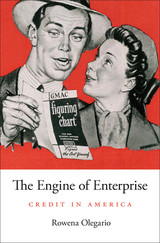
American households, businesses, and governments have always used intensive amounts of credit. The Engine of Enterprise traces the story of credit from colonial times to the present, highlighting its productive role in building national prosperity. Rowena Olegario probes enduring questions that have divided Americans: Who should have access to credit? How should creditors assess borrowers’ creditworthiness? How can people accommodate to, rather than just eliminate, the risks of a credit-dependent economy?
In the 1790s Alexander Hamilton saw credit as “the invigorating principle” that would spur the growth of America’s young economy. His great rival, Thomas Jefferson, deemed it a grave risk, inviting burdens of debt that would amount to national self-enslavement. Even today, credit lies at the heart of longstanding debates about opportunity, democracy, individual responsibility, and government’s reach.
Olegario goes beyond these timeless debates to explain how the institutions and legal frameworks of borrowing and lending evolved and how attitudes about credit both reflected and drove those changes. Properly managed, credit promised to be a powerful tool. Mismanaged, it augured disaster. The Engine of Enterprise demonstrates how this tension led to the creation of bankruptcy laws, credit-reporting agencies, and insurance regimes to harness the power of credit while minimizing its destabilizing effects.

Michel Foucault observed that “the birth of philology attracted far less notice in the Western mind than did the birth of biology or political economy.” In this penetrating exploration of the origin of the discipline, Maurice Olender shows that philology left an indelible mark on Western visions of history and contributed directly to some of the most horrifying ideologies of the twentieth century.
The comparative study of languages was inspired by Renaissance debates over what language was spoken in the Garden of Eden. By the eighteenth century scholars were persuaded that European languages shared a common ancestor. With the adoption of positivist, “scientific” methods in the nineteenth century, the hunt for the language of Eden and the search for a European Ursprache diverged. Yet the desire to reconcile historical causality with divine purpose remained.
Because the Indo-European languages clearly had a separate line of descent from the biblical tongues, the practitioners of the new science of philology (many of whom had received their linguistic training from the Church) turned their scholarship to the task of justifying the ascendance of European Christianity to the principal role in Providential history. To accomplish this they invented a pair of concepts—Aryan and Semitic—that by the end of the century had embarked on ideological and political careers far outside philology. Supposed characteristics of the respective languages were assigned to the peoples who spoke them: thus the Semitic peoples (primarily the Jews) were, like their language, passive, static, and immobile, while the Aryans (principally Western Europeans) became the active, dynamic Chosen People of the future.
Olender traces the development of these concepts through the work of J. G. Herder, Ernest Renan, Friedrich Max Müller, Adolphe Pictet, Rudolph Grau, and Ignaz Goldziher. He shows that, despite their different approaches, each of these men struggled more or less purposefully “to join romanticism with positivism in an effort to preserve a common allegiance to the doctrines of Providence.”
With erudition and elegance, Olender restores the complexity and internal contradictions of their ideas and recreates the intellectual climate in which they flourished.

Nineteenth-century theories of race were meant to provide a comprehensive account of the history and evolution of civilizations. What they produced instead were the modern foundations for prejudice and its politics. In this enlightening book, with a new preface and postscript for the Anglophone audience, Maurice Olender investigates the unsuspected links between erudition and race, showing the affinities between the social sciences and the concept of “race.”
Beginning with a brilliant study of the Protocols of Zion, the book turns to Indo-European origins of language, culture, and human “types” and moves on to studying some of the more important figures in the twentieth century, such as Eliade, Dumézil, and Momigliano. Olender elegantly teases out the cultural history of the word “race,” a history that explains its diverse political uses and its continuing relevance to our global contemporary society. In doing so, he provides an accessible and lucid pathway through the labyrinth of race and erudition and examines how to deal with diversity without the problematic heritage of racial stereotypes.

The Law Code of Viṣṇu (Vaiṣṇava-Dharmaśāstra) is one of the latest of the ancient Indian legal texts composed around the seventh century CE in Kashmir. Both because the Vaiṣṇava-Dharmaśāstra is the only Dharmaśāstra that can be geographically located and because it introduces some interesting and new elements into the discussion of Dharmaśāstric topics, this is a document of interest both to scholars of Indian legal literature and to cultural historians of India, especially of Kashmir. The new elements include the first Dharmaśāstric evidence for a wife burning herself at her husband’s cremation and the intrusion of devotional religion (bhakti) into Dharmaśāstras.
This volume contains a critical edition of the Sanskrit text based on fifteen manuscripts, an annotated English translation, and an introduction evaluating its textual history, its connections to previous Dharmaśāstras, its date and provenance, its structure and content, and the use made of it by later medieval writers.


The publication of Portraits of John Quincy Adams and His Wife makes available a record which both affords unique visual documentation of the most varied political career in American history and exemplifies the work of the principal American portraitists from the days of Copley and Stuart to the dawn of the Daguerrean era. Included in the volume's 159 illustrations are all the known life portraits, busts, and silhouettes of John Quincy and Louisa Catherine Adams, along with important replicas, copies, engravings, and representative likenesses of their siblings.
The book is organized into seven chapters which generally coincide with the major divisions of John Quincy Adams' political career. Within each chapter are discussed the artists, their relationships with the Adams's, and the provenance of each of their works. A comprehensive chronology of John Quincy Adams' life for each period accompanies the chapter to which it pertains. All important information about the size of each likeness, the inscriptions if any, the date executed, and present ownership where known is summarized in the List of Illustrations.
The Adams's, as they watched themselves age over the years in the marble, ink, or oil of the artists who portrayed them, recorded much by way of commentary on the artistic talent and process at hand. Andrew Oliver, in his detailed and lively discussions of each likeness, makes full use of the diaries and correspondence preserved in the Adams Papers, thus combining a learned appreciation with an intimate glimpse of Adams's as they saw themselves. The volume continues the record of Adams family portraiture begun with Portraits of John and Abigail Adams. The two volumes together constitute Series IV of the distinguished Adams Papers publications.
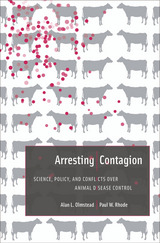
Over sixty percent of all infectious human diseases, including tuberculosis, influenza, cholera, and hundreds more, are shared with other vertebrate animals. Arresting Contagion tells the story of how early efforts to combat livestock infections turned the United States from a disease-prone nation into a world leader in controlling communicable diseases. Alan Olmstead and Paul Rhode show that many innovations devised in the fight against animal diseases, ranging from border control and food inspection to drug regulations and the creation of federal research labs, provided the foundation for modern food safety programs and remain at the heart of U.S. public health policy.
America’s first concerted effort to control livestock diseases dates to the founding of the Bureau of Animal Industry (BAI) in 1884. Because the BAI represented a milestone in federal regulation of commerce and industry, the agency encountered major jurisdictional and constitutional obstacles. Nevertheless, it proved effective in halting the spread of diseases, counting among its early breakthroughs the discovery of Salmonella and advances in the understanding of vector-borne diseases.
By the 1940s, government policies had eliminated several major animal diseases, saving hundreds of thousands of lives and establishing a model for eradication that would be used around the world. Although scientific advances played a key role, government interventions did as well. Today, a dominant economic ideology frowns on government regulation of the economy, but the authors argue that in this case it was an essential force for good.
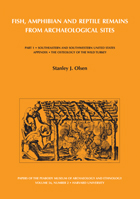

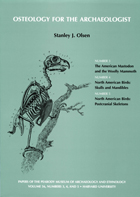


Bones from Awatovi contains a detailed analysis of the massive collection of both the faunal remains and the bone/antler artifacts recovered from the site of Awatovi.
Unique in its size and degree of preservation, the Awatovi faunal collection provides rich ground for analysis and interpretation. Olsen and Wheeler deliver an in-depth examination which is of interest to archaeologists and faunal analysts alike.
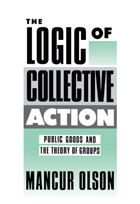
This book develops an original theory of group and organizational behavior that cuts across disciplinary lines and illustrates the theory with empirical and historical studies of particular organizations. Applying economic analysis to the subjects of the political scientist, sociologist, and economist, Mancur Olson examines the extent to which the individuals that share a common interest find it in their individual interest to bear the costs of the organizational effort.
The theory shows that most organizations produce what the economist calls “public goods”—goods or services that are available to every member, whether or not he has borne any of the costs of providing them. Economists have long understood that defense, law, and order were public goods that could not be marketed to individuals, and that taxation was necessary. They have not, however, taken account of the fact that private as well as governmental organizations produce public goods.
The services the labor union provides for the worker it represents, or the benefits a lobby obtains for the group it represents, are public goods: they automatically go to every individual in the group, whether or not he helped bear the costs. It follows that, just as governments require compulsory taxation, many large private organizations require special (and sometimes coercive) devices to obtain the resources they need. This is not true of smaller organizations for, as this book shows, small and large organizations support themselves in entirely different ways. The theory indicates that, though small groups can act to further their interest much more easily than large ones, they will tend to devote too few resources to the satisfaction of their common interests, and that there is a surprising tendency for the “lesser” members of the small group to exploit the “greater” members by making them bear a disproportionate share of the burden of any group action.
All of the theory in the book is in Chapter 1; the remaining chapters contain empirical and historical evidence of the theory’s relevance to labor unions, pressure groups, corporations, and Marxian class action.

The British government had few imperial administrators in the American colonies and perhaps fewer ways to exert its authority by force, yet Americans rarely questioned that authority until the eve of the American Revolution. The empire worked and Americans accepted British rule not because they feared the government, but rather because they had effective methods for influencing it to their own benefit.
Alison Olson reveals a source of that influence in networks of interest groups working cooperatively in England and America. Between 1640 and 1790 voluntary interest groups emerged in English politics. They began in London and gradually formed loose connections with smaller but similar interests in the English and American provinces. When the London groups became capable of lobbying the national government, they were willing to use their influence on behalf of the provincials as well. This “representation” of the Americans, though never official, was crucial to keeping the colonists content within the empire.
The type of interest group that could accommodate colonial participation was the associational, identified by the voluntary character of its membership. It included religious and ethnic communities—Presbyterians, Jews, Lutherans, Quakers, Baptists, Huguenots—and merchant groups. London lobbyists, acting as intermediaries between the colonies and the imperial government, gave American interests a vitally important role in the making of English imperial decisions and gave the English government a key source of information on just what decisions would and would not provoke American resistance. When these connections collapsed, the dissolution of the first British empire was not far away.

To prove his sons’ treachery, Herod embellished a letter. To certify his history of Vespasian’s Judaean campaign, Josephus marshaled epistolary testimony. To alleviate a domestic problem, the Israelite king David sent a missive with a man it marks for death. Arguing for the importance of the first-century historian Josephus to the study of classical and Hellenistic literature, Tragedy, Authority, and Trickery investigates letters in Josephus’s texts.
Ryan S. Olson breaks new ground by analyzing classical, Hellenistic, and Jewish texts’ use of letters, comparing those texts to Josephus’s narratives, a virtual archive containing hundreds of letters. An external voice similar to speeches, embedded letters raise questions of authority, drive and color dramatic scenes, and function at textual and meta-textual levels to deceive their readers. Josephus, contextualized in a complex intellectual and cultural milieu, sustains and develops epistolarity in important ways that will be of interest to classicists, historians, theologians, and comparatists.



Li Mengyang (1473–1530) was a scholar-official and man of letters who initiated the literary archaist movement that sought to restore ancient styles of prose and poetry in sixteenth-century China. In this first book-length study of Li in English, Chang Woei Ong comprehensively examines his intellectual scheme and situates Li’s quest to redefine literati learning as a way to build a perfect social order in the context of intellectual transitions since the Song dynasty.
Ong examines Li’s emergence at the distinctive historical juncture of the mid-Ming dynasty, when differences in literati cultures and visions were articulated as a north-south divide (both real and perceived) among Chinese thinkers. Ong argues that this divide, and the ways in which Ming literati compartmentalized learning, is key to understanding Li’s thought and its legacy. Though a northerner, Li became a powerful voice in prose and poetry, in both a positive and negative sense, as he was championed or castigated by the southern literati communities. The southern literati’s indifference toward Li’s other intellectual endeavors—including cosmology, ethics, political philosophy, and historiography—furthered his utter marginalization in those fields.

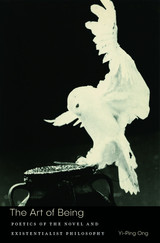
The Art of Being is a powerful account of how the literary form of the novel reorients philosophy toward the meaning of existence. Yi-Ping Ong shows that for Kierkegaard, Sartre, and Beauvoir, the form of the novel in its classic phase yields the conditions for reconceptualizing the nature of self-knowledge, freedom, and the world. Their discovery gives rise to a radically new poetics of the nineteenth- and twentieth-century realist novel.
For the existentialists, a paradox lies at the heart of the novel. As a work of art, the novel exists as a given totality. At the same time, the capacity of the novel to compel belief in the free and independent existence of its characters depends on the absence of any perspective from which their lives may be viewed as a consummated whole. At stake in the poetics of the novel are the conditions under which knowledge of existence is possible. Ong’s reframing of foundational debates in novel theory takes us beyond old dichotomies of mind and world, interiority and totality, and form and mimesis. It illuminates existential dimensions of novelistic realism overlooked by empirical and sociological approaches.
Bringing together philosophy, novel theory, and intellectual history with groundbreaking readings of Tolstoy, Eliot, Austen, James, Flaubert, and Zola, The Art of Being reveals how the novel engages in its very form with philosophically rich notions of self-knowledge, freedom, authority, world, and the unfinished character of human life.


Even in the panoply of Roman history, Hadrian stands out. Emperor from 117 to 138 ad, he was at once a benevolent ruler and a ruthless military leader, known for his restless and ambitious nature, his interest in architecture, and his passion for Greek culture. This book moves beyond the familiar image of Hadrian to offer a new appraisal of this Emperor’s contradictory personality, his exploits and accomplishments, his rule, and his military role, against the backdrop of his twenty-one-year reign.
Lavishly illustrated with key works of art and objects, celebrated and little-known sculptures, bronzes, coins and medals, drawings, and watercolors from museums around the globe, the book conveys a vivid sense of the world Hadrian inhabited. Thorsten Opper shows the emperor from many angles—as a complex individual, as a military leader and strategist, as the amateur architect who created magnificent buildings such as his villa at Tivoli (an empire in miniature), as the lover who deified his male lover Antinous after his mysterious death in the Nile, and, finally, as the traveler who tirelessly roamed his empire and its boundaries.
From his place in Roman history to his legacy, which even makes its way into the popular culture of our day, the Hadrian who emerges from these pages is no longer larger than life; rather, he has all the depth and complexity, the color and shadings and detail of life itself.

Imperial Greek epos.
Oppian of Cilicia flourished in the latter half of the second century, and dedicated his Fishing (in five books) to Antoninus, presumably Marcus Aurelius. It deals with the habits and characteristics of fish as well as giving instructions for fishing: if not exactly poetical, it contains a great deal of curious information. The Chase, dedicated to Caracalla, is an inferior composition and may even be the work of a Syrian imitator. The first book gives an appreciation of the huntsman’s horses and hounds, the three remaining being devoted to the hunting of wild animals, from the lion to the hare. This edition is equipped with extensive zoological and ichthyological notes.
This volume also includes the extant work of two epic poets of Egypt who wrote in the second half of the fifth century under the influence of Nonnus. The Rape of Helen of Colluthus in 394 lines is a pleasant account of the Judgement of Paris and Helen’s elopement with him; Tryphiodorus (papyri reveal the correct spelling to be Triphiodorus) deals with The Taking of Troy in 691 lines, beginning with the Wooden Horse and ending with the sacrifice of Polyxena.

This volume is a companion to The Old English and Anglo-Latin Riddle Tradition. Its extensive notes and commentary on hundreds of Latin, Old English, and Old Norse–Icelandic riddles illuminate and clarify the multifaceted and interconnected nature of a broad, international tradition. Within this commentary, readers will encounter a deep reservoir of knowledge about riddles produced in both Latin and Old English during the Anglo-Saxon period, and the literatures with which they were in dialogue.
Riddles range from those by prominent authors like Aldhelm, Bede, Alcuin, and Boniface to those presented anonymously in collections such as the Exeter Book. All are fully discussed, with particular attention paid to manuscript traditions, subject matter, solutions, style, sources, parallels, and recommendations for further reading. Consideration is given to running themes throughout the collection, comparisons to other riddles and to other literature more broadly, and important linguistic observations and manuscript readings. The commentary also lists the manuscripts and earlier editions for each riddle, extensive catalogues of proposed solutions, and additional bibliographic references. Following the general discussion of each riddle there is detailed line-by-line annotation.
This authoritative commentary is the most comprehensive examination to date of the bilingual riddle tradition of Anglo-Saxon England and its links to the wider world.

What offers over seven hundred witty enigmas in several languages? Answer: The Old English and Anglo-Latin Riddle Tradition. Riddles, wordplay, and inscrutable utterances have been at the heart of Western literature for many centuries. Often brief and always delightful, medieval riddles provide insights into the extraordinary and the everyday, connecting the learned and the ribald, the lay and the devout, and the familiar and the imported. Many solutions involve domestic life, including “butter churn” and “chickens.” Others like “the harrowing of hell” or “the Pleiades” appeal to an educated elite. Still others, like “the one-eyed seller of garlic,” are too absurd to solve: that is part of the game. Riddles are not simply lighthearted amusement. They invite philosophical questions about language and knowledge.
Most riddles in this volume are translated from Old English and Latin, but it also includes some from Old Norse–Icelandic. The Old English and Anglo-Latin Riddle Tradition assembles, for the first time ever, an astonishing array of riddles composed before 1200 CE that continue to entertain and puzzle.

The replacement of a diseased organ by a healthy one is a medical dream that has become a reality for thousands of men and women, boys and girls. Once considered experimental and highly risky, human tissue and organ transplantation is today's successful therapy for disorders affecting the heart, liver, kidney, pancreas, eyes, ears, and bone marrow. Combining the most advanced techniques in surgery, immunology, infectious diseases, cardiology, nephrology, psychiatry, and nursing, organ transplantation is at the forefront of medical science.
Despite the advances in transplantation, the literature available to a potential transplant recipient is scant. This book, written by members of the world-renowned transplant team at the Massachusetts General Hospital in collaboration with a veteran medical journalist, is expressly created for patients and their families, the lay public, and allied health personnel. With an unparalleled sweep, the authors present a history of human organ transplantation, a review of transplant immunology and antirejection drugs, a survey of the national donor organ network, a characterization of the hospital transplant team, and the process of harvesting donor organs. They also discuss the realities of surgery and recovery; potential complications, and hints for transplant recipients and their families on how to cope with the stresses of illness, the wait for a donor organ, and the transplant operation itself.
In providing a clear picture of what to expect from an organ transplant, the authors include case studies of patients' experiences before and following transplantation, and they depict how patients and their families interact with the hospital's medical team. As a result, this book offers a sympathetic and unsensationalized guide for the more than 20,000 patients each day who await an organ transplant-and for those who are intimately involved with the patient's successful recovery.

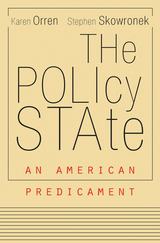
The steady accretion of public policies over the decades has fundamentally changed how America is governed. The formulation and delivery of policy have emerged as the government’s entire raison d’être, redefining rights and reconfiguring institutional structures. The Policy State looks closely at this massive unnoticed fact of modern politics and addresses the controversies swirling around it. Government has become more responsive and inclusive, but the shift has also polarized politics and sowed a deep distrust of institutions. These developments demand a thorough reconsideration of historical governance.
“A sterling example of political science at its best: analytically rigorous, historically informed, and targeted at questions of undeniable contemporary significance… Orren and Skowronek uncover a transformation that revolutionized American politics and now threatens to tear it apart.”
—Timothy Shenk, New Republic
“Wherever you start out in our politics, this book will turn your sense of things sideways and make you rethink deeply held assumptions. It’s a model of what political science could be, but so rarely is.”
—Yuval Levin, National Review
“A gripping narrative…opening up new avenues for reflection along methodological, conceptual, and normative lines.”
—Bernardo Zacka, Contemporary Political Theory
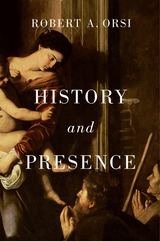
A Choice Outstanding Academic Title of the Year
Beginning with metaphysical debates in the sixteenth century over the nature of Christ’s presence in the host, the distinguished historian and scholar of religion Robert Orsi imagines an alternative to the future of religion that early moderns proclaimed was inevitable.
“Orsi’s evoking of the full reality of the holy in the world is extremely moving, shot through with wonder and horror.”
—Caroline Walker Bynum, Common Knowledge
“This is a meticulously researched, humane, and deeply challenging book. The men and women studied in this book do not belong to ‘a world we have lost.’ They belong to a world we have lost sight of.”
—Peter Brown, Princeton University
“[A] brilliant, theologically sophisticated exploration of the Catholic experience of God’s presence through the material world… On every level—from its sympathetic, honest, and sometimes moving ethnography to its astute analytical observations—this book is a scholarly masterpiece.”
—A. W. Klink, Choice
“Orsi recaptures God’s breaking into the world … The book does an excellent job of explaining both the difficulties and values inherent in recognizing God in the world.”
—Publishers Weekly
“This book is classic Orsi: careful, layered, humane, and subtle…a thought-provoking, expertly arranged tour of precisely those abundant, excessive phenomena which scholars have historically found so difficult to think.”
—Sonja Anderson, Reading Religion

Yanagita Kunio (1875–1962) was a public intellectual who played a pivotal role in shaping modern Japan’s cultural identity. A self-taught folk scholar and elite bureaucrat, he promoted folk studies in Japan. So extensive was his role that he has been compared with the fabled Grimm Brothers of Germany and the great British folklorist James G. Frazer (1854–1941), author of The Golden Bough. This monograph is only the second book-length English-language examination of Yanagita, and it is the first analysis that moves beyond a biographical account of his pioneering work in folk studies.
An eccentric but insightful critic of Japan’s rush to modernize, Yanagita offers a compelling array of rebuttals to mainstream social and political trends in his carefully crafted writings. Through a close reading of Yanagita’s interdisciplinary texts, which comment on a wide range of key cultural issues that characterized the first half of Japan’s twentieth century, Melek Ortabasi seeks to reevaluate the historical significance of his work. Ortabasi’s inquiry simultaneously exposes, discursively, some of the fundamental assumptions we embrace about modernity and national identity in Japan and elsewhere.

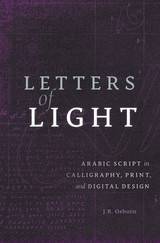
Arabic script remains one of the most widely employed writing systems in the world, for Arabic and non-Arabic languages alike. Focusing on naskh—the style most commonly used across the Middle East—Letters of Light traces the evolution of Arabic script from its earliest inscriptions to digital fonts, from calligraphy to print and beyond. J. R. Osborn narrates this storied past for historians of the Islamic and Arab worlds, for students of communication and technology, and for contemporary practitioners.
The partnership of reed pen and paper during the tenth century inaugurated a golden age of Arabic writing. The shape and proportions of classical calligraphy known as al-khatt al-mansub were formalized, and variations emerged to suit different types of content. The rise of movable type quickly led to European experiments in printing Arabic texts. Ottoman Turkish printers, more sensitive than their European counterparts to the script’s nuances, adopted movable type more cautiously. Debates about “reforming” Arabic script for print technology persisted into the twentieth century.
Arabic script continues to evolve in the digital age. Programmers have adapted it to the international Unicode standard, greatly facilitating Arabic presence online and in word processing. Technology companies are investing considerable resources to facilitate support of Arabic in their products. Professional designers around the world are bringing about a renaissance in the Arabic script community as they reinterpret classical aesthetics and push new boundaries in digital form.
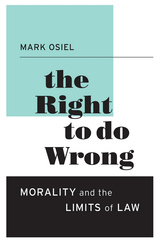
Common morality—in the form of shame, outrage, and stigma—has always been society’s first line of defense against ethical transgressions. Social mores crucially complement the law, Mark Osiel shows, sparing us from oppressive formal regulation.
Much of what we could do, we shouldn’t—and we don’t. We have a free-speech right to be offensive, but we know we will face outrage in response. We may declare bankruptcy, but not without stigma. Moral norms constantly demand more of us than the law requires, sustaining promises we can legally break and preventing disrespectful behavior the law allows.
Mark Osiel takes up this curious interplay between lenient law and restrictive morality, showing that law permits much wrongdoing because we assume that rights are paired with informal but enforceable duties. People will exercise their rights responsibly or else face social shaming. For the most part, this system has worked. Social order persists despite ample opportunity for reprehensible conduct, testifying to the decisive constraints common morality imposes on the way we exercise our legal prerogatives. The Right to Do Wrong collects vivid case studies and social scientific research to explore how resistance to the exercise of rights picks up where law leaves off and shapes the legal system in turn. Building on recent evidence that declining social trust leads to increasing reliance on law, Osiel contends that as social changes produce stronger assertions of individual rights, it becomes more difficult to depend on informal tempering of our unfettered freedoms.
Social norms can be indefensible, Osiel recognizes. But the alternative—more repressive law—is often far worse. This empirically informed study leaves little doubt that robust forms of common morality persist and are essential to the vitality of liberal societies.



This revised volume, originally published in Sweden, consolidates multidisciplinary research on gender inequalities in health. Reviewing previous research and presenting new empirical data from Sweden and elsewhere, the authors examine basic concepts, possible hypotheses, explanatory models, and policy solutions for the biological and social causes of the differences in health between men and women. Along with discussions of reproductive, mental, and occupational health, this book reviews critical issues such as violence and asks important questions, such as why men are dying younger.
The volume also analyzes how Sweden’s labor market, social structure, and health care system have contributed to these gender differences, and what effects these factors will have in the future. Sweden’s experience as a pioneer in health achievement and gender equality provides valuable insights into the health-related challenges remaining for the rest of the world.

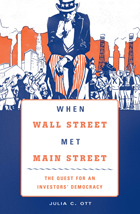
The financial crisis that began in 2008 has made Americans keenly aware of the enormous impact Wall Street has on the economic well-being of the nation and its citizenry. How did financial markets and institutions-commonly perceived as marginal and elitist at the beginning of the twentieth century-come to be seen as the bedrock of American capitalism? How did stock investment-once considered disreputable and dangerous-first become a mass practice?
Julia Ott tells the story of how, between the rise of giant industrial corporations and the Crash of 1929, the federal government, corporations, and financial institutions campaigned to universalize investment, with the goal of providing individual investors with a stake in the economy and the nation. As these distributors of stocks and bonds established a broad, national market for financial securities, they debated the distribution of economic power, the proper role of government, and the meaning of citizenship under modern capitalism.
By 1929, the incidence of stock ownership had risen to engulf one quarter of American households in the looming financial disaster. Accordingly, the federal government assumed responsibility for protecting citizen-investors by regulating the financial securities markets. By recovering the forgotten history of this initial phase of mass investment and the issues surrounding it, Ott enriches and enlightens contemporary debates over economic reform.

Consider two polar images of the same medical condition: the pale and fragile Camille ensconced on a chaise in a Victorian parlor, daintily coughing a small spot of blood onto her white lace pillow, and a wretched poor man in a Bowery flophouse spreading a dread and deadly infection. Now Katherine Ott chronicles how in one century a romantic, ambiguous affliction of the spirit was transformed into a disease that threatened public health and civic order. She persuasively argues that there was no constant identity to the disease over time, no “core” tuberculosis.
What we understand today as pulmonary tuberculosis would have been largely unintelligible to a physician or patient in the late nineteenth century. Although medically the two terms described the same disease of the lungs, Ott shows that “tuberculosis” and “consumption” were diagnosed, defined, and treated distinctively by both lay and professional health workers. Ott traces the shift from the pre-industrial world of 1870, in which consumption was conceived of primarily as a middle-class malaise that conferred virtue, heightened spirituality, and gentility on the sufferer, to the post-industrial world of today, in which tuberculosis is viewed as a microscopic enemy, fought on an urban battleground and attacking primarily the outcast poor and AIDS patients.
Ott’s focus is the changing definition of the disease in different historical eras and environments. She explores its external trappings, from the symptoms doctors chose to notice (whether a pale complexion or a tubercle in a dish) to the significance of the economic and social circumstances of the patient. Emphasizing the material culture of disease—medical supplies, advertisements for faraway rest cures, outdoor sick porches, and invalid hammocks—Ott provides insight into people’s understanding of illness and how to combat it. Fevered Lives underscores the shifting meanings of consumption/tuberculosis in an extraordinarily readable cultural history.

Daniel Otte offers a comprehensive taxonomic treatise on all known species of grasshoppers from the Gulf of Panama to Alaska. Grasshoppers are a dominant form of life in most terrestrial habitats. The abundance of grasshoppers and the ease of obtaining them have brought about their extensive use in a wide variety of biological studies. It is probably fair to say that grasshoppers are biologically better understood than any equivalent group of insects. They were used in pioneering studies in genetics and are increasingly being used to test evolutionary, ecological, and physiological theories. Unfortunately, much of this work is still based on a poor classification, and many studies are hindered by difficulties which arise in identifying the species.
Now for the first time scientists are provided with:
– Illustrated keys and lists for distinguishing genera and species;
– Information on distributional limits, habitat preference, ecology, behavior, and life cycle;
– A list of pertinent references;
– Point distribution maps;
– A taxonomic index as well as a history of name changes.
But the book’s most spectacular feature is the author’s detailed drawings of all species in full color. The North American Grasshoppers will be especially useful to scientists in agriculture, environmental assessment, biogeography, grassland ecology, and insect taxonomy, and will also appeal to amateur naturalists. Undoubtedly, it will long stand as a definitive reference in its field.

Having received such lavish praise for the first volume of his definitive taxonomic handbook, Daniel Otte now turns his attention to the bandwing grasshoppers. As before, the book includes:
– Highly detailed, full-color drawings of all species, including more than one color phase when appropriate;
– Illustrated keys and lists of principal recognition features;
– Information on distributional limits, habitat preferences, ecology, behavior, and life cycle;
– Excellent point-distribution maps;
– Pertinent references, taxonomic index, history of name changes, and an explanation of the characters used to derive phylogenies.
Like its predecessor, this volume will be useful to scientists in agriculture, environmental assessment, biogeography, grassland ecology, and insect taxonomy. It will also appeal to amateur naturalists.




Following its initial publication in 2005, A Byzantine Settlement in Cappadocia has become a seminal work in interpreting the rich material remains of Byzantine Cappadocia. In the first systematic site survey from the region, at the settlement known as Çanlı Kilise in Western Cappadocia, the careful mapping and documentation of rock-cut and masonry architecture and its decoration led to a complete reexamination of the place of Cappadocia within the larger framework of Byzantine social and cultural developments. This revised edition builds upon its predecessor with an updated preface, a new bibliography, and a new master map of the Çanlı Kilise site.
Based on four seasons of fieldwork, Ousterhout challenges the commonly accepted notion that the rock-cut settlements of Cappadocia were primarily monastic. He proposes instead that the settlement at Çanlı Kilise was a town, replete with mansions, hovels, barns, stables, storerooms, cisterns, dovecotes, wine presses, fortifications, places of refuge, churches, chapels, cemeteries, and a few monasteries—that is, features common to most Byzantine communities. A Byzantine Settlement in Cappadocia has led to a rethinking of such sites and to a view of Cappadocia as an untapped resource for the study of material culture and daily life within the Byzantine Empire.

Cappadocia, a picturesque volcanic region of central Anatolia, preserves the best evidence of daily life in the Byzantine Empire and yet remains remarkably understudied, better known to tourists than to scholars. The area preserves an abundance of physical remains: at least a thousand rock-cut churches or chapels, of which more than one-third retain significant elements of their painted decoration, as well as monasteries, houses, entire towns and villages, underground refuges, agricultural installations, storage facilities, hydrological interventions, and countless other examples of non-ecclesiastical architecture. In dramatic contrast to its dearth of textual evidence, Cappadocia is unrivaled in the Byzantine world for its material culture.
Based upon the close analysis of material and visual residues, Visualizing Community offers a critical reassessment of the story and historiography of Byzantine Cappadocia, with chapters devoted to its architecture and painting, as well as to its secular and spiritual landscapes. In the absence of a written record, it may never be possible to write a traditional history of the region, but, as Robert Ousterhout shows, it is possible to visualize the kinds of communities that once formed the living landscape of Cappadocia.
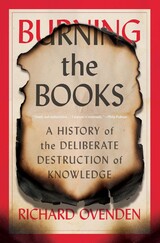
A Wolfson History Prize Finalist
A New Statesman Book of the Year
A Sunday Times Book of the Year
“Timely and authoritative…I enjoyed it immensely.”
—Philip Pullman
“If you care about books, and if you believe we must all stand up to the destruction of knowledge and cultural heritage, this is a brilliant read—both powerful and prescient.”
—Elif Shafak
Libraries have been attacked since ancient times but they have been especially threatened in the modern era, through war as well as willful neglect. Burning the Books describes the deliberate destruction of the knowledge safeguarded in libraries from Alexandria to Sarajevo, from smashed Assyrian tablets to the torching of the Library of Congress. The director of the world-famous Bodleian Libraries, Richard Ovenden, captures the political, religious, and cultural motivations behind these acts. He also shines a light on the librarians and archivists preserving history and memory, often risking their lives in the process.
More than simply repositories for knowledge, libraries support the rule of law and inspire and inform citizens. Ovenden reminds us of their social and political importance, challenging us to protect and support these essential institutions.
“Wonderful…full of good stories and burning with passion.”
—Sunday Times
“The sound of a warning vibrates through this book.”
—The Guardian
“Essential reading for anyone concerned with libraries and what Ovenden outlines as their role in ‘the support of democracy, the rule of law and open society.’”
—Wall Street Journal
“Ovenden emphasizes that attacks on books, archives, and recorded information are the usual practice of authoritarian regimes.”
—Michael Dirda, Washington Post


“Precious volumes,” or pao-chüan, were produced by popular sects in the Ming and early Qing dynasties. These scriptures were believed to have been divinely revealed to sect leaders and contain teachings and ritual instructions that provide valuable information about a lively and widespread religious tradition outside mainstream Confucianism, Taoism, and Buddhism. Largely neglected until now, they testify to the imagination and devotion of popular religious leaders.
This book, the most detailed and comprehensive study of pao-chüan in any language, studies 34 early examples of this literature in order to understand the origins and development of this textual tradition. Although the work focuses on content and structure, it also treats the social context of these works as well as their transmission and ritual use.

The Roman book of days.
Ovid (Publius Ovidius Naso, 43 BC–AD 17), born at Sulmo, studied rhetoric and law at Rome. Later he did considerable public service there, and otherwise devoted himself to poetry and to society. Famous at first, he offended the emperor Augustus by his Ars amatoria, and was banished because of this work and some other reason unknown to us, and dwelt in the cold and primitive town of Tomis on the Black Sea. He continued writing poetry, a kindly man, leading a temperate life. He died in exile.
Ovid’s main surviving works are the Metamorphoses, a source of inspiration to artists and poets including Chaucer and Shakespeare; the Fasti, a poetic treatment of the Roman year of which Ovid finished only half; the Amores, love poems; the Ars amatoria, not moral but clever and in parts beautiful; Heroides, fictitious love letters by legendary women to absent husbands; and the dismal works written in exile: the Tristia, appeals to persons including his wife and also the emperor; and similar Epistulae ex Ponto. Poetry came naturally to Ovid, who at his best is lively, graphic and lucid.
The Loeb Classical Library edition of Ovid is in six volumes.

The poetry of change.
Ovid (Publius Ovidius Naso, 43 BC–AD 17), born at Sulmo, studied rhetoric and law at Rome. Later he did considerable public service there, and otherwise devoted himself to poetry and to society. Famous at first, he offended the emperor Augustus by his Ars amatoria, and was banished because of this work and some other reason unknown to us, and dwelt in the cold and primitive town of Tomis on the Black Sea. He continued writing poetry, a kindly man, leading a temperate life. He died in exile.
Ovid's main surviving works are the Metamorphoses, a source of inspiration to artists and poets including Chaucer and Shakespeare; the Fasti, a poetic treatment of the Roman year of which Ovid finished only half; the Amores, love poems; the Ars amatoria, not moral but clever and in parts beautiful; Heroides, fictitious love letters by legendary women to absent husbands; and the dismal works written in exile: the Tristia, appeals to persons including his wife and also the emperor; and similar Epistulae ex Ponto. Poetry came naturally to Ovid, who at his best is lively, graphic and lucid.
The Loeb Classical Library edition of Ovid is in six volumes.

The poetry of change.
Ovid (Publius Ovidius Naso, 43 BC–AD 17), born at Sulmo, studied rhetoric and law at Rome. Later he did considerable public service there, and otherwise devoted himself to poetry and to society. Famous at first, he offended the emperor Augustus by his Ars amatoria, and was banished because of this work and some other reason unknown to us, and dwelt in the cold and primitive town of Tomis on the Black Sea. He continued writing poetry, a kindly man, leading a temperate life. He died in exile.
Ovid's main surviving works are the Metamorphoses, a source of inspiration to artists and poets including Chaucer and Shakespeare; the Fasti, a poetic treatment of the Roman year of which Ovid finished only half; the Amores, love poems; the Ars amatoria, not moral but clever and in parts beautiful; Heroides, fictitious love letters by legendary women to absent husbands; and the dismal works written in exile: the Tristia, appeals to persons including his wife and also the emperor; and similar Epistulae ex Ponto. Poetry came naturally to Ovid, who at his best is lively, graphic and lucid.
The Loeb Classical Library edition of Ovid is in six volumes.

Seductive verse.
Ovid (Publius Ovidius Naso, 43 BC–AD 17), born at Sulmo, studied rhetoric and law at Rome. Later he did considerable public service there, and otherwise devoted himself to poetry and to society. Famous at first, he offended the emperor Augustus by his Ars amatoria, and was banished because of this work and some other reason unknown to us, and dwelt in the cold and primitive town of Tomis on the Black Sea. He continued writing poetry, a kindly man, leading a temperate life. He died in exile.
Ovid’s main surviving works are the Metamorphoses, a source of inspiration to artists and poets including Chaucer and Shakespeare; the Fasti, a poetic treatment of the Roman year of which Ovid finished only half; the Amores, love poems; the Ars amatoria, not moral but clever and in parts beautiful; Heroides, fictitious love letters by legendary women to absent husbands; and the dismal works written in exile: the Tristia, appeals to persons including his wife and also the emperor; and similar Epistulae ex Ponto. Poetry came naturally to Ovid, who at his best is lively, graphic and lucid.
The Loeb Classical Library edition of Ovid is in six volumes.

Two early works by the consummate Latin love poet.
Ovid (Publius Ovidius Naso, 43 BC–AD 17), born at Sulmo, studied rhetoric and law at Rome. Later he did considerable public service there, and otherwise devoted himself to poetry and to society. Famous at first, he offended the emperor Augustus by his Ars amatoria, and was banished because of this work and some other reason unknown to us, and dwelt in the cold and primitive town of Tomis on the Black Sea. He continued writing poetry, a kindly man, leading a temperate life. He died in exile.
Ovid's main surviving works are the Metamorphoses, a source of inspiration to artists and poets including Chaucer and Shakespeare; the Fasti, a poetic treatment of the Roman year of which Ovid finished only half; the Amores, love poems; the Ars amatoria, not moral but clever and in parts beautiful; Heroides, fictitious love letters by legendary women to absent husbands; and the dismal works written in exile: the Tristia, appeals to persons including his wife and also the emperor; and similar Epistulae ex Ponto. Poetry came naturally to Ovid, who at his best is lively, graphic and lucid.
The Loeb Classical Library edition of Ovid is in six volumes.
READERS
Browse our collection.
PUBLISHERS
See BiblioVault's publisher services.
STUDENT SERVICES
Files for college accessibility offices.
UChicago Accessibility Resources
home | accessibility | search | about | contact us
BiblioVault ® 2001 - 2024
The University of Chicago Press









